Taim al-Haj | Murad Abdul Jalil | Abdullah al-Khatib
22 October was a turning point for Russia, a date that marked a change in the form of its military presence in Syria, which expanded to include areas Moscow would not dare to approach. These areas were considered under the American influence and the international coalition against the so-called Islamic State (I.S.).
On that date, Russia managed to stop the Turkish artillery active fire through an operation Ankara called “the Spring of Peace,” which was meant to expel the “Kurdish People’s Protection Units” (YPG) from the east of the Euphrates. However, an agreement signed by both Turkish President Recep Tayyip Erdogan and his Russian counterpart, Vladimir Putin, in the Russian resort of Sochi has put an end to the fight under terms set by both parties.
Afterward, Russia sought to expand its presence in the region, driven by political and economic ambitions, through military, political, and social means to infiltrate in areas beyond the control of its Syrian ally and on the outskirts of U.S. bases and points of influence.
Although the circumstances following the Turkish “Spring of Peace” Operation paved the way for this step, the American return after a sudden withdrawal at the fall of last year, overwhelmed Russian calculations again. This made the Russian presence in the Middle East merely an adventure with unknown results.
Russia preparing itself militarily to fill an American “Void”
Following the “Sochi” agreement, Moscow took the initiative and started achieving its dream of a military infiltration east of the Euphrates under the pretext of removing the YPG from Turkish borders. Back then, Russia did not hesitate to take control over the American bases to fill the void, as “the Spring of Peace” Operation coincided with the U.S. military pullback from the region.
Meantime U.S. Secretary of Defense, Mark Esper, announced on 13 October 2019, five days of “the Spring of Peace” Operation, that the U.S. would withdraw roughly 1,000 troops from the northeastern region of Syria “as safely and quickly as possible.” Esper added that the fight between Turkish forces and US-backed Syrian Kurdish fighters cannot be deterred by U.S. troops.
This American step paved the way for Russian forces to control the northeastern region of Syria. Consequently, Russia immediately took over the evacuated American military bases there, such as “al-Saadiya” in Manbij and “Kharab Ashk” in Ain al-Arab, in the countryside of Aleppo, as well as “Qasr Yalda” in the western countryside of al-Hasakah province.
Among the most prominent gains Russia achieved on the eastern side of the Euphrates is probably its growing military activity in Qamishli Airport, which was transformed into a military base in the region. This can be seen through a landmark step that took place on 14 November 2019, where air defense systems and attack helicopters were moved from Hmeimim military base in Latakia Countryside to Qamishli Airport in al-Hasakah province, as reported by “Zvezda television”, a Russian news agency back then.
Today, the extent of the Russian military presence in northeastern Syria cannot be determined, after only seven months of infiltrating the region. The Russian Ministry of Defense, which regarded this step as one of its most important achievements in Syria has been continuously publishing news and photos of the arrival of new troops to the area, after inking “the Sochi Agreement.”
According to a map of Russian bases and points of military presence in Syria published by “The Bridge Center for Studies”, Russian forces are currently deployed over fifteen major points in northeastern Syria.
Some of these significant points are located in Ain Issa city, the northern countryside of Raqqa, in both Manbij and Ain al-Arab cities in the countryside of Aleppo, additionally to Tell Tamer and Qamishli Airport and Amouda city in al-Hasakah province.
These sites saw continuous military reinforcements, the most prominent of which took place in early April through a military convoy of more than 50 military vehicles, tanks, and armored troop carriers. The convoy set off from Ain Issa towards Tell Tamer in the countryside of al-Hasakah, to reach Qamishli Airport, its final destination, through the “M4” international highway.
Russia has also reinforced its presence near Qamishli Airport, where there are about 200 Russian soldiers, dozens of armored vehicles, and tanks as well as six helicopters. Some Russian officers also take villas near the airport as headquarters, after seizing them.
تواصل روسيا محاولاتها للتوسع في شمال شرقي سوريا حيث تنتشر القوات الأمريكية.
برأيك.. هل ستسمح الولايات المتحدة الأمريكية لروسيا بالتوسع أكثر في مناطق شرق الفرات؟
Posted by جريدة عنب بلدي Enab Baladi on Tuesday, 28 April 2020
Politics…Tribes…Media
Russia’s soft tools in the East
The Russian presence east of the Euphrates is a form of pressure exerted on the American presence, and goes in conformity with the military buildups on two different levels, political and tribal, according to the researcher at the “Omran Center for Strategic Studies” (OCSS), Badr Mulla Rashid.
On the political level, Russia tried to be a mediator and a catalyst for both the Syrian regime’s and the Kurdish-led Autonomous Administration of North and East Syria (NES) ’s negotiations to come up with a plan on how to manage the northeastern region whether prior the U.S. withdrawal decision or after it.
While Russia tried, by all means, to ink an agreement between both parties before the announcement of U.S. military pullback, this latter’s decision to keep its troops in place instead, has changed the Russian approach towards running negotiations. Russia used U.S. decision this time to exert pressure on the Kurdish-led “NES”, subsequently exerting pressure on the U.S. as well, after the former lost many of its direct control points from Tell Abyad to Ras al-Ain, additionally to a significant part of full control over vast areas such as Raqqa, Manjib, Ain al-Arab (Kobani) and a part of al-Hasakah province.
The second level, according to the same researcher, is through Moscow’s connections with tribes in the area, in an attempt to form a new military faction in areas between the southern countryside of Qamishli city, connected to the city from its southern neighborhoods.
In case this attempt succeeded, it would constitute a breach in the region for the first time through a Russian-backed faction, able to disturb U.S. patrols and represents a threat to what is left of the NES’s project.
Russia fawning region’s tribes
Russia regards the rapprochement of Arab and even Kurdish tribes in the northeastern region of Syria as an opportunity to expand its influence and deepen its infiltration, alongside its military moves.
In the meantime, last April, intensive meetings were held between Russian officials and local dignitaries, and tribal leaders of al-Hasakah countryside, as Russia attempts to portray itself as capable of resolving crises in the region through pledges to accelerate the process of solving problems.
There were many visits by Russian delegations to the area, including a visit to Amouda town to meet its local council members, as well as another visit by a Russian delegation to Tell Tamer town, where a meeting was held with tribal leaders and dignitaries of the local council on the promise of solving the problems imposed by sector of services.
The joint chairperson of Amouda District Council, Salma Hussein, said in statements to a newspaper, on 18 last April, that a Russian delegation headed by the official of the peacekeeping forces in the region, met all council officials in the region and showed its readiness to provide the needed aid.
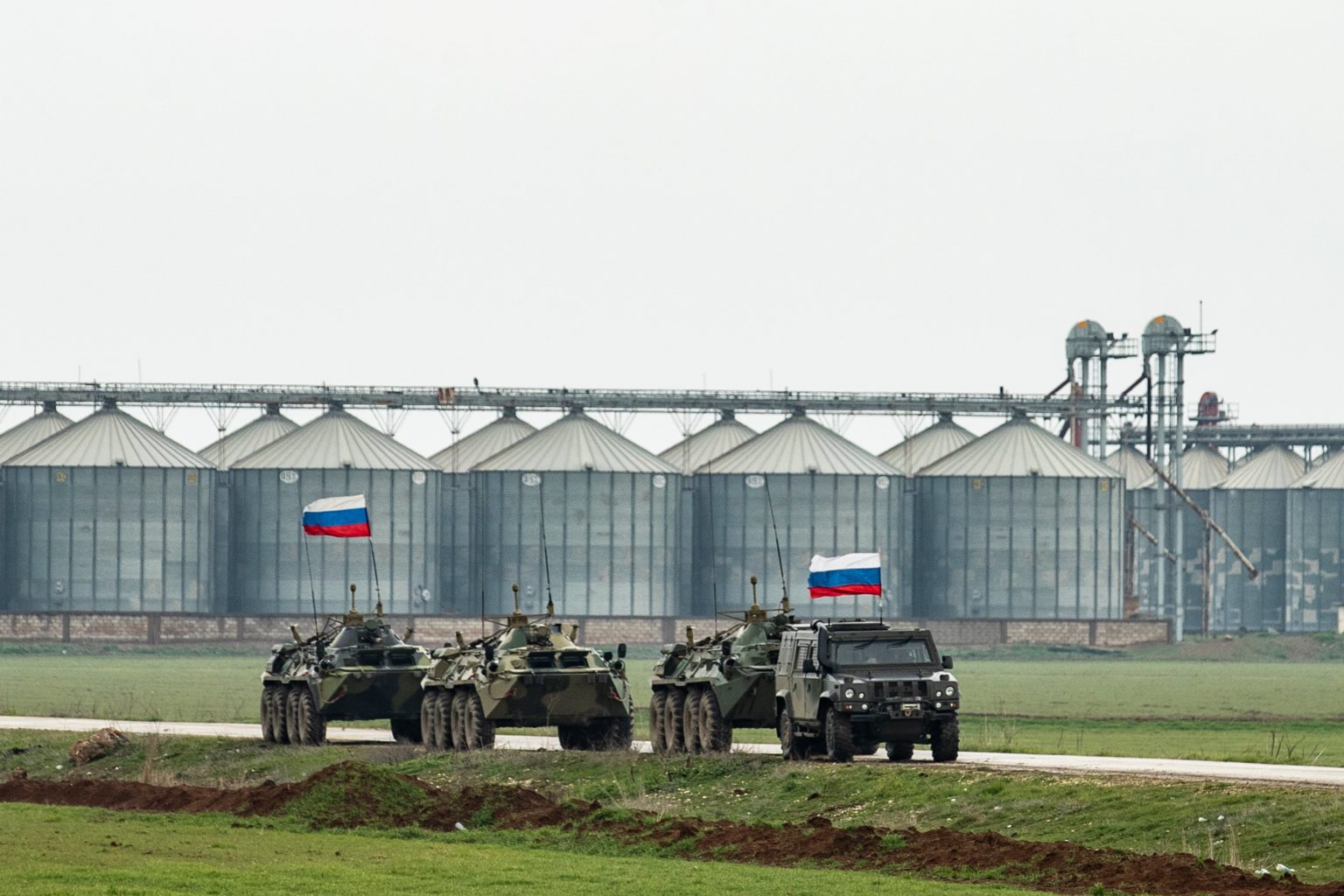
Russian military vehicles during a patrol over al-Hasakah province near the Turkish borders- 22 February 2020 (AFP)
A Tribal force drives Syrian Democratic Forces “SDF” away
The researcher in the Syrian social and political history and a resident of Qamishli city, Muhanad al-Katea, believes that Russian attempts to fawn these tribes came after the same attempts by Americans in Deir Ezzor. Al-Katea pointed out the tribal structure in al-Hasakah seems more accepting towards Russians compared to Americans because they did not engage in fights with a tribal aspect against the Syrian regime.
In an interview with Enab Baladi, al-Katea confirmed that the Russian and American focus on tribes excluding the “SDF” from the picture, in an attempt to form a tribal force that goes beyond “SDF”, as he put it.
Al-Katea added that dependence on tribal society and attempting to win its friendship by all parties, including the Syrian regime has been an ongoing process in the eastern Euphrates. The researcher explained that the “SDF” has succeeded in wooing these tribes or, more precisely, “tribal fighters” taking advantage of the economic situation in the region.
According to al-Katea, these alliances could prove fruitful, if taken seriously and could provide the material alternative that would spare these tribes from joining the “SDF”. He added that such alliances’ success depends greatly on the form, nature of coordination as well as supervision from powers intending to build such alliances.
The researcher believes that Russia seeks to take advantage of the public rejection of the “SDF” and use it for its benefit, as it aims to incite these tribes to revolt against the American presence through playing the Kurdish card by Russia to gather Arab tribes around it.
Al-Katea also stressed that this also depends on providing an alternative for the “SDF”, especially that it provided thousands of job vacancies in both the military and civil sectors.
Inflaming tensions by Russia: No to America… No to America
Russia also worked on another agenda intended to exert more pressure on the United States in the eastern Euphrates, through the use of the media to stoke the public’s disgust against it.
Meantime, Russia launches a media campaign against the United States through statements by its officials who accuse it of occupying the Syrian soil, to enhance the former’s ambitions in the region and increase public pressure on the latter.
A report by the New York Times newspaper published on 15 last February, shed light on Russia’s intensified campaign on U.S. forces in northeastern Syria in the previous period.
The newspaper also quoted the Vice Adm. Tim Szymanski, a Navy SEAL who is deputy head of the military’s Special Operations Command, who said: “We know they’re pressing”, expressing his confidence that Russia will continue to seek an advantage in the northeast, even in areas patrolled by the U.S. and backed the “SDF”.
Earlier, there was a video recording of a Russian soldier inciting Syrians in al-Hasakah countryside to chant against America during a Russian patrol on the area where U.S. forces are based too.
In the video, the same Russian soldiers urge the crowd in Khirbet Amo village to chant slogans against the U.S. troops in Syria by saying, “No to America… No to America”.
In a previous report, Enab Baladi’s team monitored accelerated Russian efforts in al-Hasakah countryside, attempting to build alliances with Arab and even Kurdish tribes in the northeastern region of Syria.
Eastern Syria’s wealth…
Russian ambitions or just a need to support the regime?
Being interrelated at so many levels, it becomes almost impossible to separate politics from the economy, consequently leading to the emergence of a conflict between influential countries in northeastern Syria to control the region’s wealth, which will constitute a good prize for the party which will seize it.
Over the past few years, local Syrian parties have abandoned conflict over these resources; the same was the case in both the political and military scene and almost everything related to active countries’ decisions and control over the Syrian file. This limited the conflict between Americans, who control oil wells through very tight and particular security, and Russians who try in every possible means to extend their influence over Syrian east’s wealth.
Most important wealth in eastern Syria
Areas controlled by the U.S-backed “SDF” in the eastern Euphrates, include some of the most important energy, agriculture, and water resources inside Syria. These areas also include oil and gas fields of strategic importance such as “Rumailan”, “Ash Shaddadi”, “al-Jibsah” and “al-Souedieh” controlled by US-backed “People’s Protection Units” (YPG) since mid-2012. There are also the “Rumailan” refinery, and Karachuk, “Hamza”, “al-Alayan”, “Maashouk” and “Lailak” oil fields.
The “Rumailan” field includes 1322 oil well, in addition to 25 liquified gas wells in “al-Souedieh”. These fields are under the management of Rumailan Fields Management (affiliated to the Autonomous Administration of North and East Syria (NES)), whose duties revolve around producing and processing crude oil (separating gas from water).
Syria’s oil reserves are estimated by 2.5 billion barrels, according to the International Energy Agency (IEA), equivalent to only 0.14 percent of the world’s oil reserves, according to a report by the British Broadcasting Corporation (BBC) on 29 October 2019.
In addition to oil, the region is Syria’s economic reservoir, since it provides 64 percent of Syria’s need for irrigated wheat, 38 percent of rainfed wheat, and another 63 percent of cotton, additionally to 29 percent of lentils, according to the World Food Organization (FAO).
The region’s significance is also attributed to comprising some of the major dams in Syria, such as “the Euphrates”, “Tishreen” and “al-Baath”, which consist of important sources of water and electric power generation.
Why does Russia need Syrian oil?
Despite the significance of these resources in Syria, as they contribute to self-sufficiency and prevent the need to importing some food items, still the region’s productions capacity of oil and wheat is mediocre on a global scale and does not encourage foreign demand for exports compared to production capacities of countries like Russia and the United States. This situation raises many questions about the economic goal Russia seeks to achieve from controlling these resources.
Economic researcher Khaled Turkawi, talking to Enab Baladi, said that Russians attempt to achieve a set of economic goals in the region, which includes taking control over oil wells to provide the Syrian regime with fuel and end years of fuel crisis that has resulted from the imposed economic sanctions and challenges of importing it.
Over the past years, while seeking compensation for its military support for the Syrian regime, Russia has focused on obtaining the lion’s share of oil and gas contracts that allow the exploration, extraction as well as selling oil and gas productions.
In fact, the most recent of these contracts took place in December 2019, when the People’s Assembly approved three contracts for oil exploration signed between the Syrian regime’s Ministry of Petroleum and Mineral Resources and two Russian oil companies. According to the Assembly, both Russian companies, “Mercury” and “Vilada” will be responsible for oil exploration and production in two different areas inside Syria.
Back then, the Minister of Petroleum and Mineral Resources, Ali Ghanem, said that “Mercury” will be responsible for oil exploration in fields in Block “No. 7” and Block “No. 19” in the eastern part of the Euphrates River controlled by the U.S., while the second contract signed with “Vilada” company is for oil exploration, development and production in Block “No.23” north Damascus and covers an area of 2159 km2, as he put it.
Turkawi believes that through signing these contracts, the Syrian regime is trying to put Russians into a direct confrontation with the Americans to prevent their expansion in the region. However, as he put it, the question still remains, do studies about these areas show that they contain large quantities of oil and gas? As he considered that Russian companies would not have signed these contracts without conducting studies about the region and having future ambitions there.
Wheat trade temptation
Economic researcher, Khaled Turkawi, thinks that the high quality of Syrian wheat may attract wheat traders in the world because Syria’s wheat crop is relatively high compared to the number of cultivated fields.
In the past few years, Russia directed its focus on the acquisition and control of the wheat sector, with the announcement of a Russian company called “Sofokrim”, in February 2017, of the establishment of flour mills in Homs, at the cost of 70 million euros. The installation of these mills will be in collaboration between Russian and Syrian engineers, with the Syrian government covering the expenses. In addition, thousands of tons of wheat will be exported to Syria.
Meantime, the Minister of Transport at the Syrian regime’s government, Ali Hammoud, spoke of a proposal that was submitted to establish a distribution center for Russian wheat in Syria, that depends on Russia’s large wheat reserves ready to be exported. According to the pro-regime newspaper al-Watan, which quoted him back in March 2018, Hammoud said that Russia needs a market to sell its large wheat reserves. Thus Syria was proposed as a distribution center for Russian wheat in the Middle East.
Some consider Russia’s control over wheat production and exportation tightens its grip on Syrians’ livelihoods and thus subjugates any future government to it. For his part, Turkawi thinks otherwise, since Syria is merely a very small governorate for Russia at the level of expenses and resources, as he put it.
America or Russia
Which to prevail in Eastern Euphrates?
According to the researcher at Omran Center for Strategic Studies (OCST), Badr Mulla Rashid, generally, exerting pressure on the U.S. and the NES, goes in conformity with Russian goals in Syria. Since Russia’s main goal is to help the regime to regain control over all Syrian soil, Washington’s decision to withdraw entirely from Syria last year was a free prize to Russia, Iran, and the Syrian regime.
However, the American retreat on the withdrawal decision has lowered Russian expectations and ambitions regarding regaining full control over Syrian territories and international road networks, as well as controlling Syria’s reserves of oil, gas, and wheat in the northeastern part of the country.
According to Mulla Rashid, this will push Russia to always exert more pressure on the U.S. either to increase its direct influence in areas eastern and southern Qamishli or to oblige Washington to accept the form of the final solution that Russia tries to impose through the force of arms, as he put it.
Is America wary?
Amid an increase in Russian troops deployment in the northeastern part of Syria, America is wary about Russia’s ability to expand its full influence on the region. Hence, the former started to send warning messages to Russia by intercepting Russian patrols in the whole eastern Euphrates region, and by preventing such patrols from reaching areas under the American influence.
The high number of these interceptions revealed the extent of the American caution, which was translated in the past March and April by increasing the number of American troops and military presence eastern Euphrates once again. Meanwhile, Russia seemed surprised by the number of troops deployed in the region.
The “Semalka” crossing border located between the Kurdistan region of Iraq and areas under the control of the NES witnessed the arrival of many American military convoys later distributed on the American military bases in the region.
Such military supplies were not done through borders only but were also conducted through air landing operations such as was the case in the “al-Omar oil field” base in Deir Ezzor.
The most important American bases in northeastern Syria are currently located in “Ash Shaddadi”, “Tel Baidar”, “Tel Hajer”, “Al-Qahtaniyah”, “al-Malikiyah”, “Amouda”, “Tell Tamer” and “al-Wazir” in al-Hasakah countryside. Major American bases are also placed in Sarin, south of Ain al-Arab in the countryside of Aleppo, as well as “al-Jazra” base in Raqqa along with several military bases in Deir Ezzor.
Meanwhile, America is trying to belittle the Russian deployment eastern the Euphrates, through its media, as its special envoy to Syria, James Jeffrey, said on 2 May, “there are no real and large Russian military forces on the ground, and there is no such thing as the Russian occupation. The same applies to the Syrian government, except for some few military bases in Qamishli and Deir Ezzor,” stressing that the SDF controls the region.
The holding sway
Military expert Colonel Ahmed Hamadeh believes that northeastern Syria is under U.S. forces’ control, despite their repeated withdrawals from the region, particularly those that occurred during the Turkish “Spring of Peace” Operation.
According to Hamadeh, both the Syrian regime and Russians thought about filling the American void at some point, thus entered Ain al-Arab and areas in al-Hasakah and Qamishli. However, America never left “Tel Baidar” and the oil fields in Deir Ezzor and Qamishli regions stretching to the Iraqi border.
The U.S. is fully aware of the importance of the region and its oil and wealth, and therefore it prevents the Syrian regime, Russia, and Iran from benefiting from it. Accordingly, America has strengthened its military presence around oil fields since Russia started approaching east of the Euphrates region.
Talking to Enab Baladi, Hamadeh recalls the harsh response groups of Russian fighters and Syrian regime forces received from the U.S. forces when they tried to approach the oil fields in Deir Ezzor. In reference when American planes attacked Russian “Wagner” mercenaries in February 2018 in Deir Ezzor governorate, which is said to have killed about 200 fighters.
Therefore, the presence of U.S. forces in northeastern Syria constitutes a stumbling block to the Russian expansion in the region, supported by fears of the expansion of the Syrian regime in conjunction with “untrusted” Russian attempts and promises.
if you think the article contain wrong information or you have additional details Send Correction
النسخة العربية من المقال
-
Follow us :
Most viewed
- 311 casualties among government forces and civilians in Syrian coast
- Rights organization documents government and civilian deaths in Syrian coast
- Al-Shibani: Syria is facing a hidden and declared war
- Ankara supports Damascus... Moscow abdicates responsibility for events in coastal region
- Syrian Defense Ministry appoints "Abu Amsha" as Hama Brigade commander












 American soldiers looking at Russian military vehicles (Edited by Enab Baladi)
American soldiers looking at Russian military vehicles (Edited by Enab Baladi)





 A
A
A
A
A
A

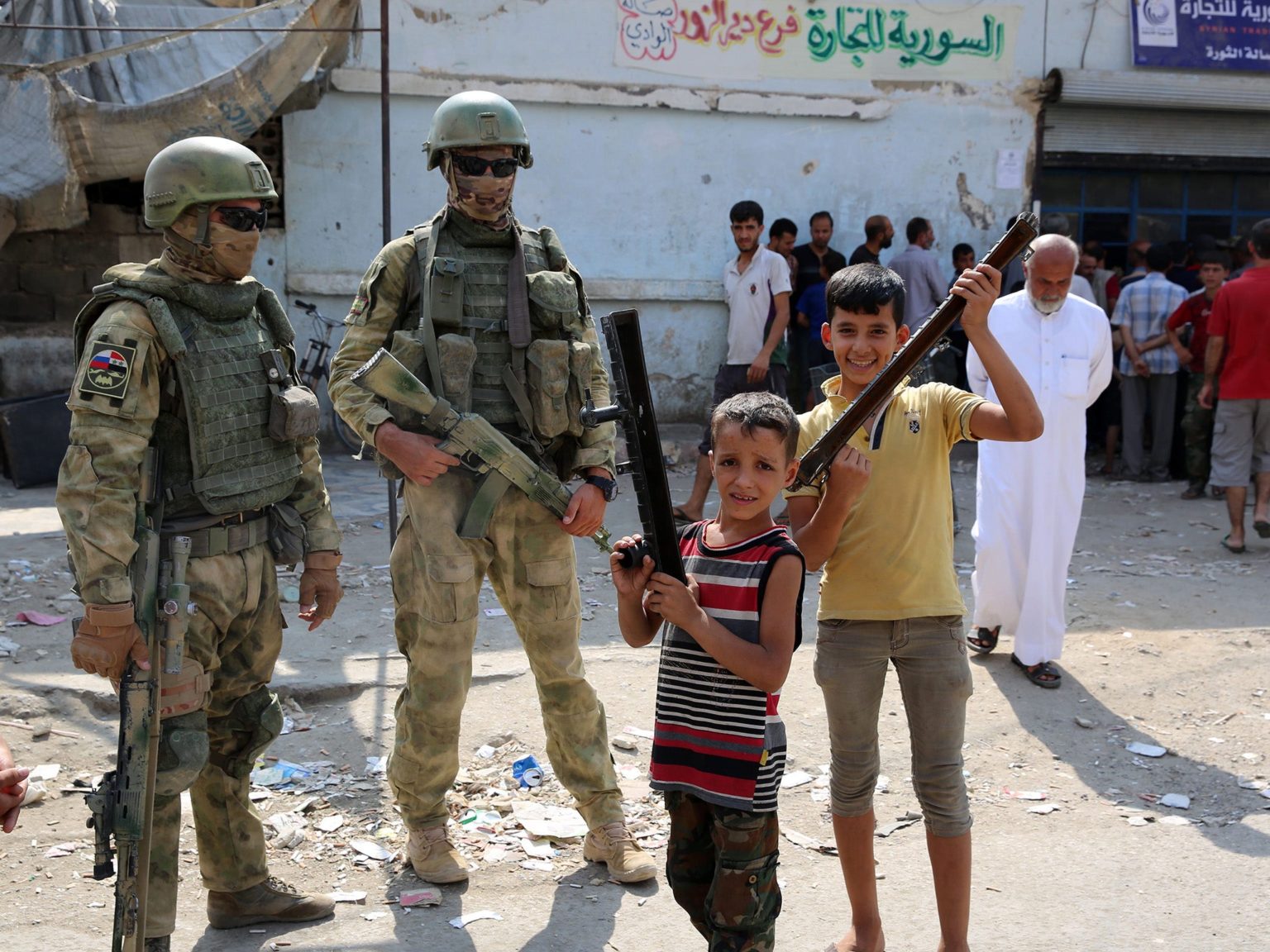
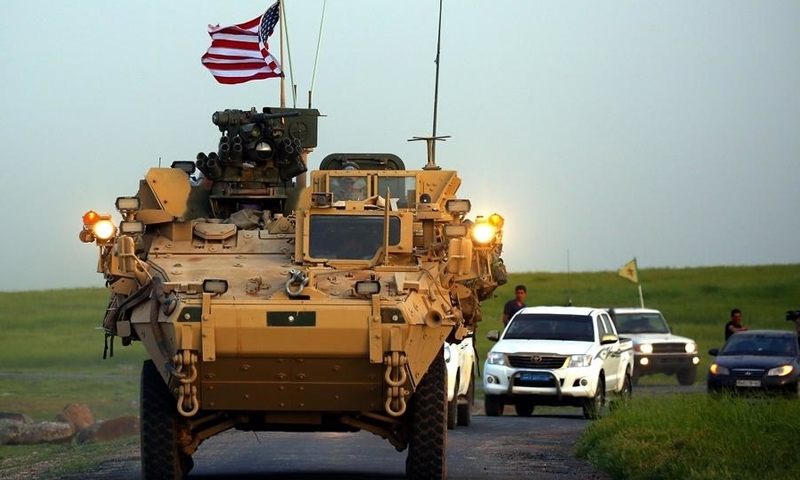

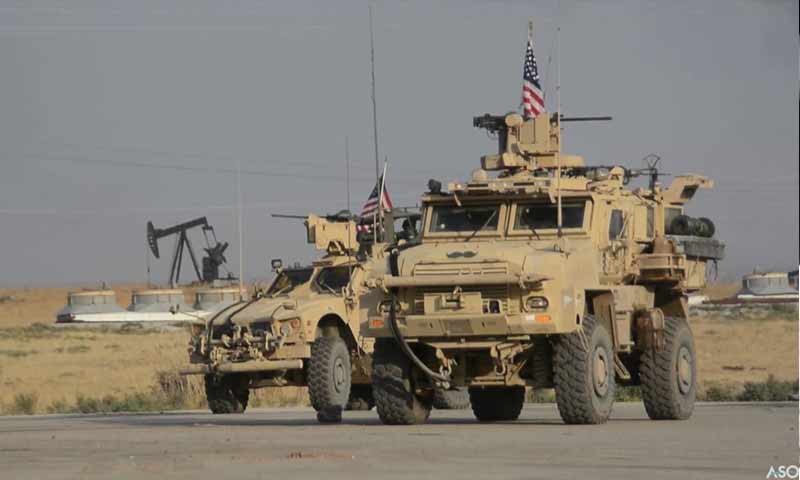



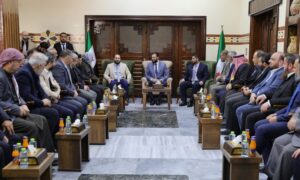
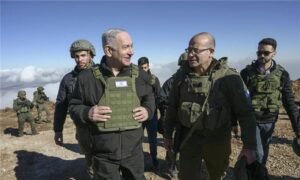
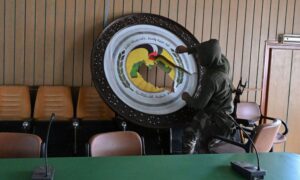
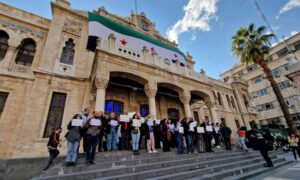
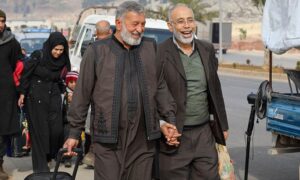
 More In-Depth
More In-Depth